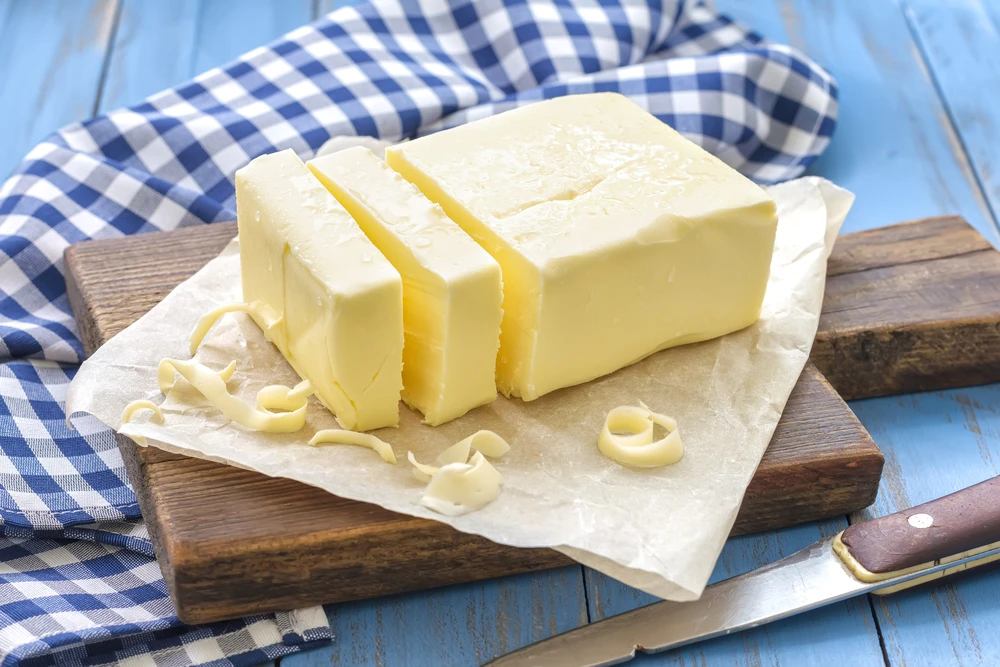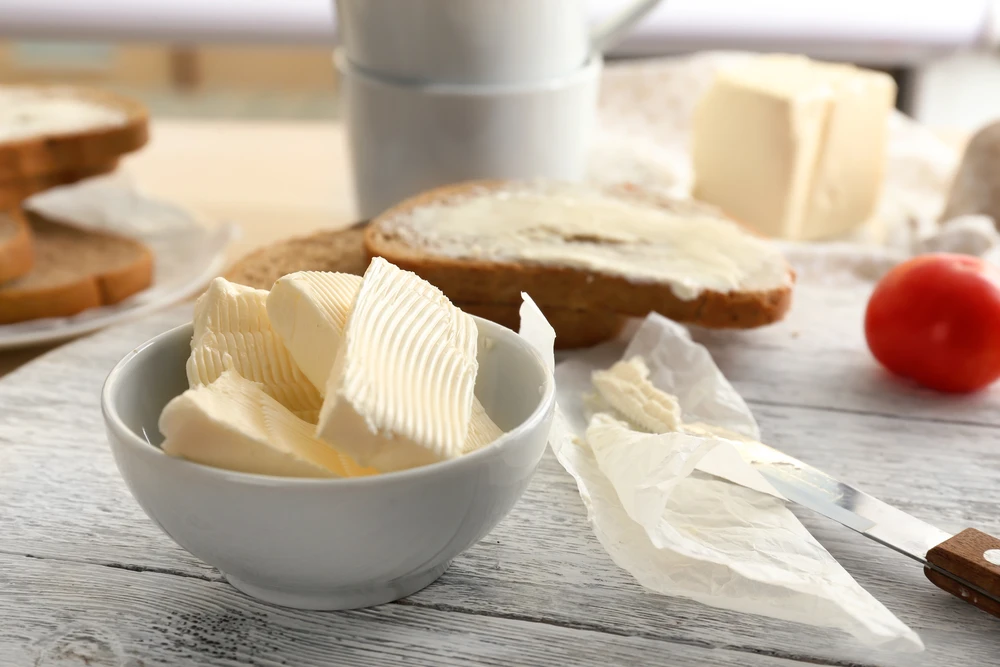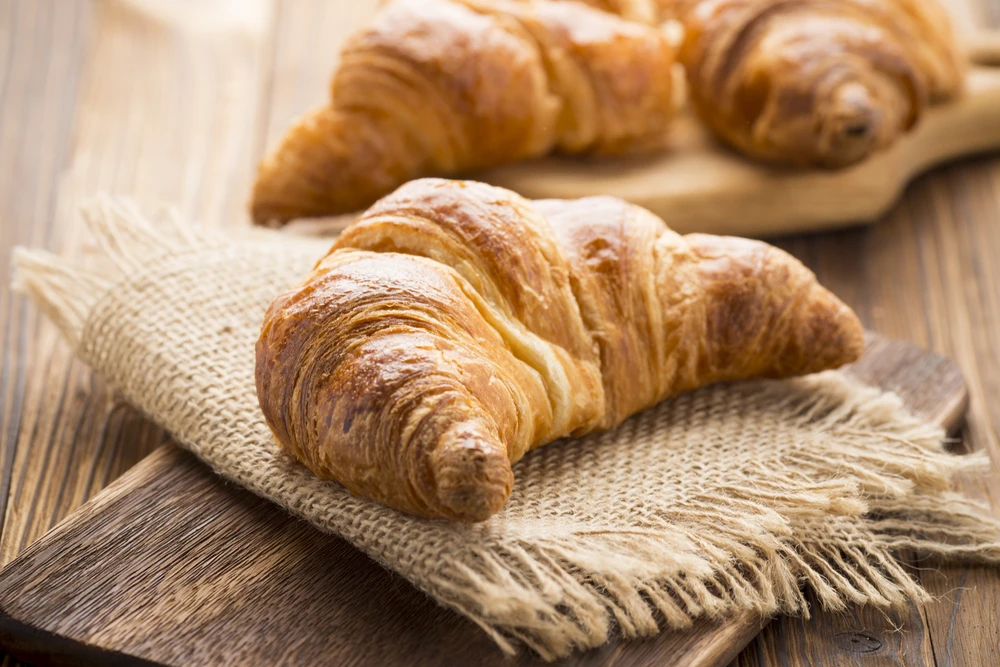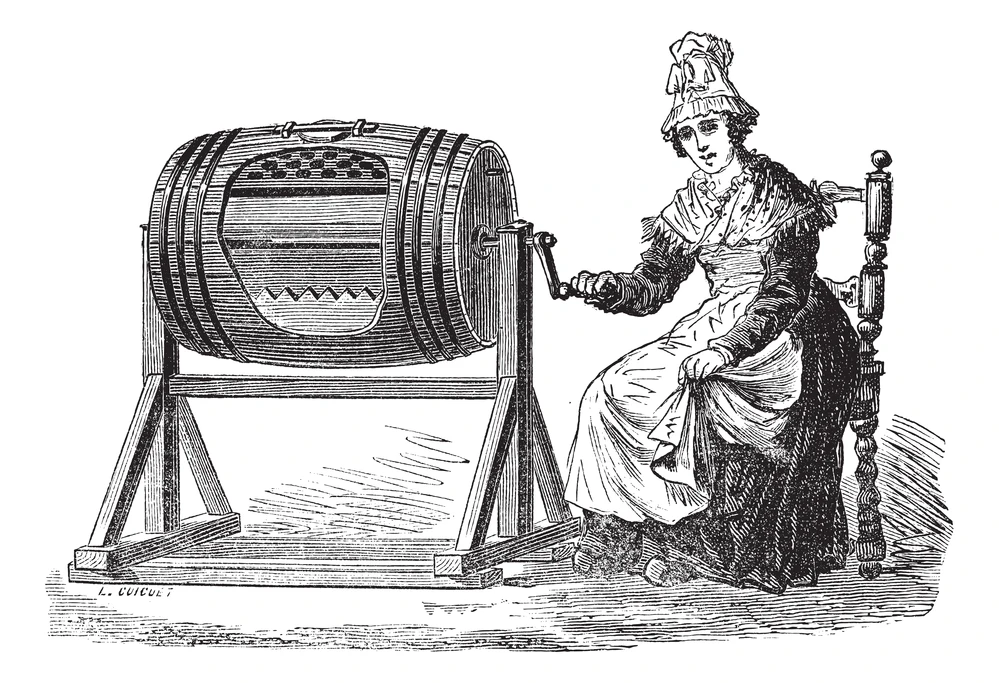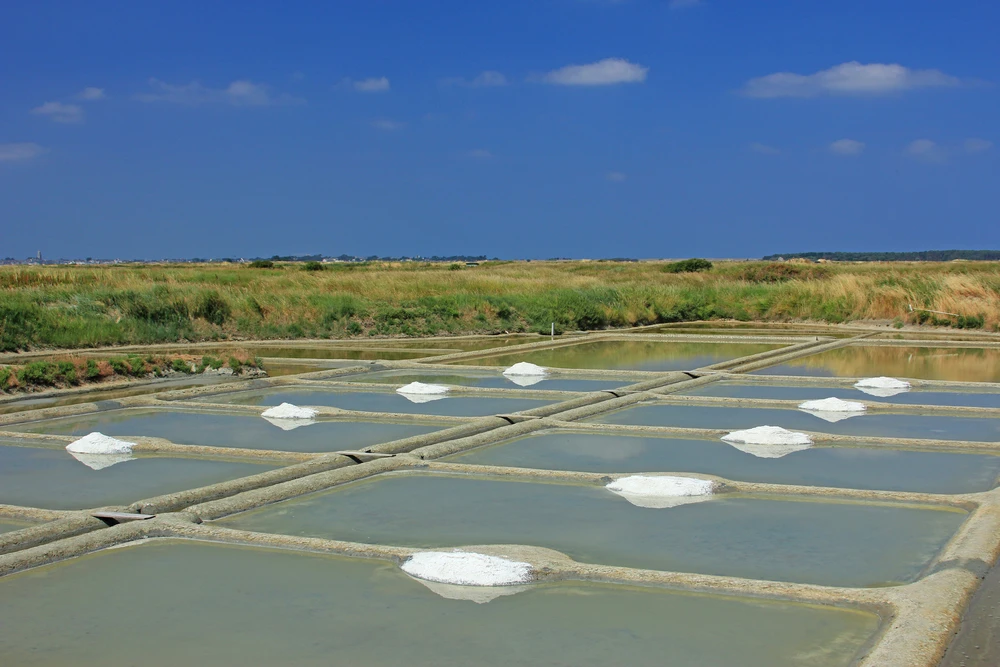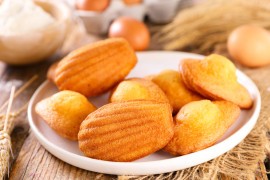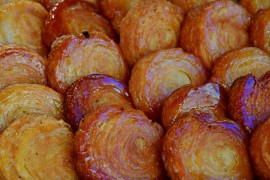Salty, sweet, what's butter?
Definition of butter :
According to the Larousse dictionary, butter is "a fatty food obtained from the cream of cow's milk". In France, butter must contain at least 82% fat . The rest is essentially water (around 16%). It is produced by churning the milk, in other words by separating the cream from the 'whey'. It is often yellow, even more so when made with milk from cows that have grazed in the spring. It keeps well in the fridge.
Sweet butter or salted butter?
It depends on your taste! Mild butter contains very little salt and has long been the speciality of Normandy. Salted butter is the speciality of Brittany, where salt has been added to butter since the Middle Ages. Initially, this was to preserve it better and because, unlike the Normans, the Bretons did not pay the gabelle, the salt tax. They could therefore use less salt and preserve their butter better. Butter is very present in both regions, but Brittany is probably the region that offers it the most.In Brittany's crêperies and restaurants, butter is always served with bread .
French butter production
France is Europe's 2nd largest butter producer, producing 354,000 tonnes every year. And it has to be said that the French eat a lot of butter! 8 kg per capita per year. To produce butter you need a lot of milk: 21 litres of milk to make 1 kg of butter. Fortunately, France produces a lot of milk.
Butter: essential for breakfast or a snack with a good baguette. Photo chosen by monsieurdefrance.com: belchonock via depositphotos.com
The best French butters
Many French regions produce butter, but only three have a Protected Designation of Origin (A .O.P.) guaranteeing the origin and production conditions of the butter. There's Isigny butter (Manche / Normandy) made between the Cotentin and Calvados regions, around the Bay of Veys. It already amazed Parisians in the 16th century, which just goes to show how famous it is. It is often very yellow and quite supple. It comes in mild and semi-salted varieties. Charentes-Poitou A.O.P. butter is made in the former Poitou-Charentes region, in Vendée and Haue Vienne. It is known for its great flavour, thanks to the fact that the cream is left to rest for 12 hours after pasteurisation. Finally, there is Bresse butter, made in the Bresse region (Ain and Saône-et-loire departments). It is made from special milk, as the cows' diet is closely monitored.
Cows in a field in Normandy. Photo chosen by monsieurdefrance.com: Jérôme Prod'homme (c)
Our favourite: Bordier butter
It's in Saint Malo that the delicious beurre bordier is made. The milk is collected around Saint Malo from the best farms in Brittany and Normandy. It is kneaded for a long time by hand, giving it an absolutely delicious texture. It is often semi-salted, salted on the fly, but it is also very often flavoured in original ways. You can try butter with seaweed, Espelette pepper, vanilla, yuzu or Roscoff onion. Simply enjoy on a slice of farmhouse bread.
Butter in French cuisine
It is an essential ingredient in many French dishes. For example, in puff pastry, which is made with butter to help it rise. It's also found in croissants and pains au chocolat (or chocolatines in the South West of France). It is essential for a French snack or breakfast with a slice of bread and even a little jam on top. Butter is always found in the famous "Jambon-beurre", the French snack par excellence. Chic restaurants are beginning to work with butter and offer different variations. Smoked butter, for example, is now available.
You can't imagine making a delicious croissant without butter! Photo chosen by monsieurdefrance.com: Depositphotos.
The history of butter
Long little appreciated
The Romans didn't like butter at all, preferring olive oil and using butter... As a beauty cream! Their hatred of butter was contagious for a long time and the Gallo-Romans were not fans of butter. It was only in the Middle Ages that butter began to be used in regions where there were more cows. For a long time, it was reserved for the richest people because cows, and therefore butter, were scarce.
Its manufacture was improved by the Normans
A Norman woman makes butter with a churn. By swirling the milk, the cream is separated from the whey and the butter is made. Image chosen by monsieurdefrance.Com ; dépositphotos.com
It was in Normandy that the Norman churn was invented, to increase yields and knead the cream better, resulting in better production. It has to be said that Normandy is an old land of butter. The tallest tower in Rouen cathedral is called "the butter tower" (1485). Not that it's made of butter, obviously, but it was paid for by a sort of fine that the faithful paid to the Church for the right to eat butter during Lent, the 40 days before Easter during which nothing fatty or meaty was to be eaten. Bourges, in Berry, in the Centre Val de Loire region, also has a butter tower as a result of the same tax. The French have long had a sweet tooth!
Rouen Cathedral's famous butter tower. Photo chosen by monsieurdefrance.com: Image by Nicolas DEBRAY from Pixabay
And the Bretons add their salt
In the past, butter did not keep well if it was not salted. This explains why not all French regions are butter fans. Indeed, until 1789, people paid the "gabelle": a compulsory tax on salt, and it was very expensive. So people preferred lard, olive oil or cream, which didn't require salt. In Brittany, salt was not taxed at all, and the many salt marshes meant that a lot of salt could be produced cheaply. So it was quite logical that the Bretons started salting their butter. It's one of the region's great specialities, and you'll very rarely find sweet butter on a Breton table.
Brittany's salt marshes at Guérande. Photo chosen by monsieurdefrance.com: joachimopelka via depositphotos.com
The 19th century brought it into fashion
Description of butter in the 17th century culinary work "le canaméliste français" by Joseph GILLIET. Photo chosen by monsieurdefrance.com: screen copy on gallica.fr
It was at the end of the 17th century that butter really made its mark on French cuisine. Its arrival in the major cities was helped by improved means of transport. From the 17th century onwards, Paris loved butter from Vanves or Chartres, but in the 18th century, the capital also discovered butter from Normandy. At the time, the butter dish was invented to keep the butter cool on the table. In the 19th century, it became customary to place a dish of bread with a little butter next to the main plate at fancy dinners. That said, butter remained an expensive product, and at the same time Emperor Napoleon III launched a competition to come up with a cheaper alternative to butter . The result was margarine, invented by the pharmacist Hippolyte Mège-Mouriès.

